Case Presentation:
Spinal Cord Tumor Neurofibroma - Case 3
History & Physical
- 69 year-old lady with 5 years history of numbness and tingling of arms and legs attributed to peripheral neuropathy, who presents to the emergency room with weakness of upper and lower extremities, and bowel and bladder incontinence of a few weeks duration.
- On physical examination, patient has upper tract signs with mild weakness of upper and lower extremities.
Imaging
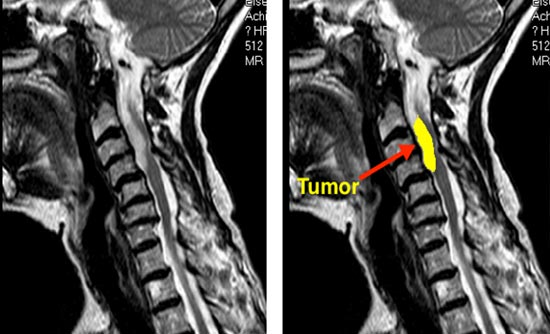
MRI scan of her cervical spine (neck) shows a large intra-dural, extra-medullary tumor pressing on the spinal cord at C2-C4 level and causing significant spinal cord compression. The tumor is marked on the right slide which is a sagittal view of the cervical spine.
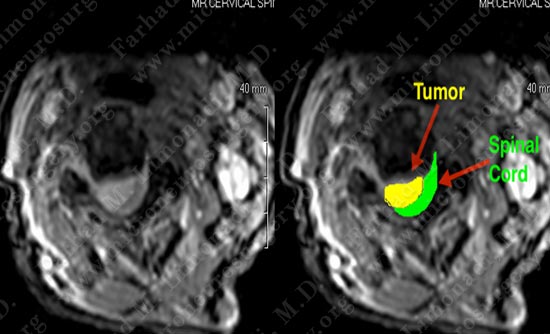
MRI scan of her cervical spine (neck) shows a large intra-dural, extra-medullary tumor pressing on the spinal cord and causing significant spinal cord compression. The tumor is marked on the right slide which is an axial view of the cervical spine.
Treatment Plan
- Patient was indicated for surgical resection of the tumor.
- Given the location of the tumor the plan was made to proceed with a posterior approach consisted of wide laminectomy, right sided facetectomy, and a lateral and posterior approach to the tumor, followed by lateral mass screw fixation to avoid spinal column instability.
Surgical Procedure
- She underwent C3-C4 and partial C2 laminectomy, C3 and C4 right sided facetectomy with exposure of the dura (covering of the spinal cord).
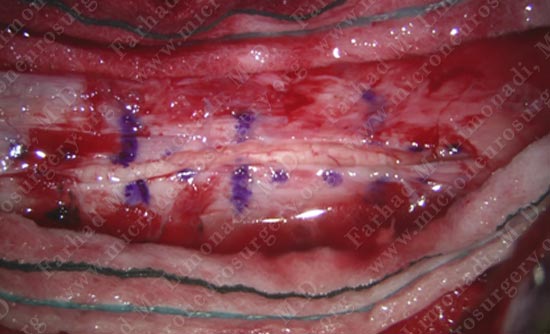
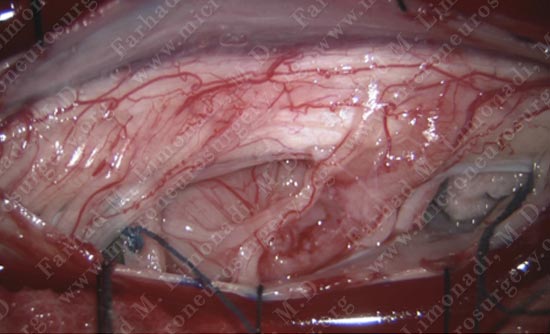
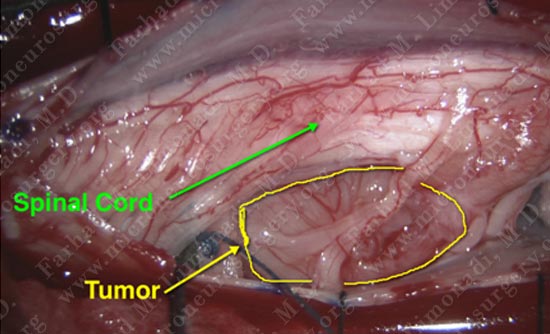
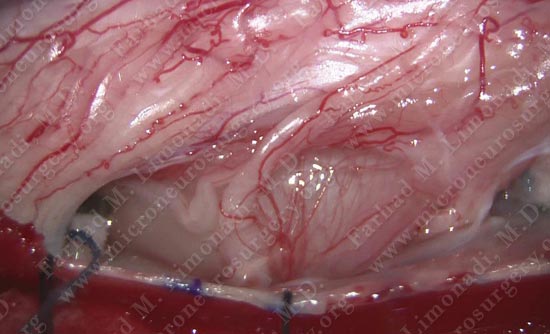
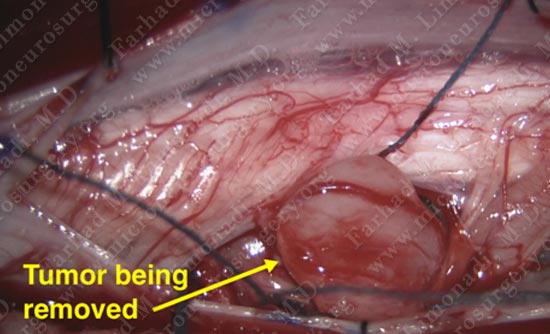
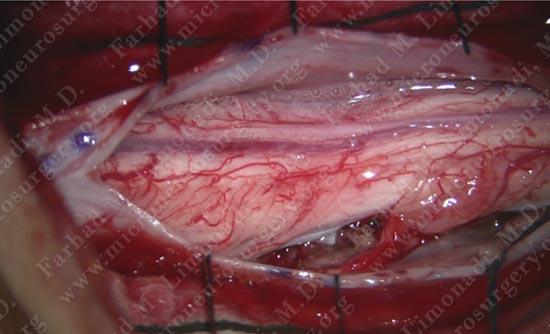
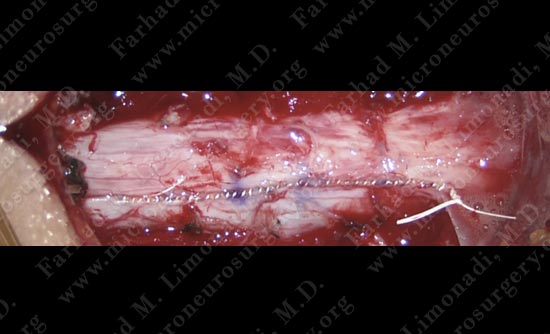
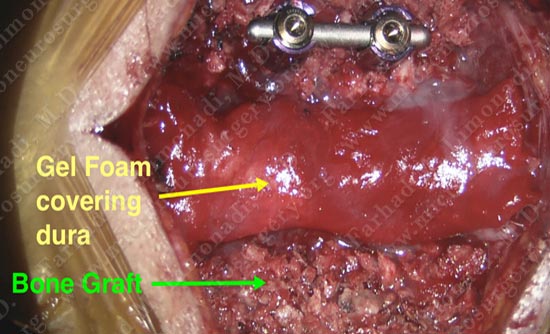
Post-op Imaging

X-ray shows excellent position of instrumentation.
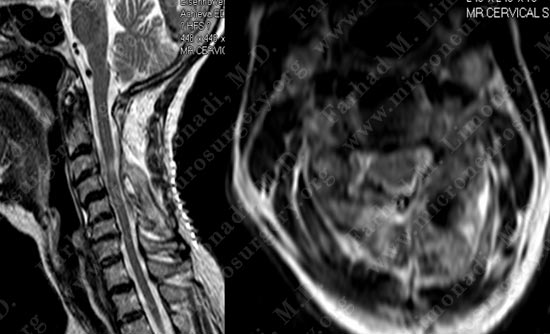
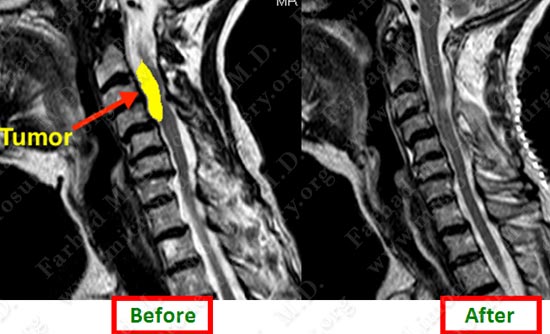
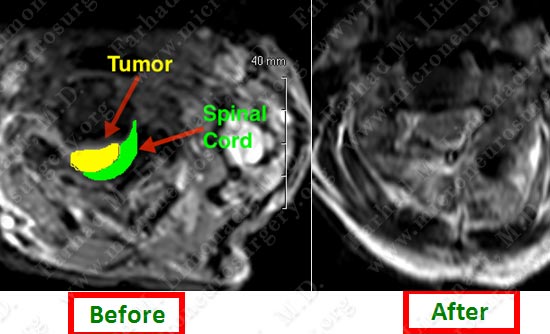
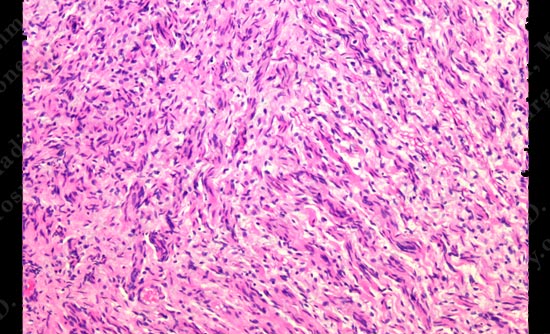
- Patient did well post-operatively with no new neurological deficit. Her bowel and bladder function returned to normal.
- She was discharged home and returned to regular function and remained tumor free.


















